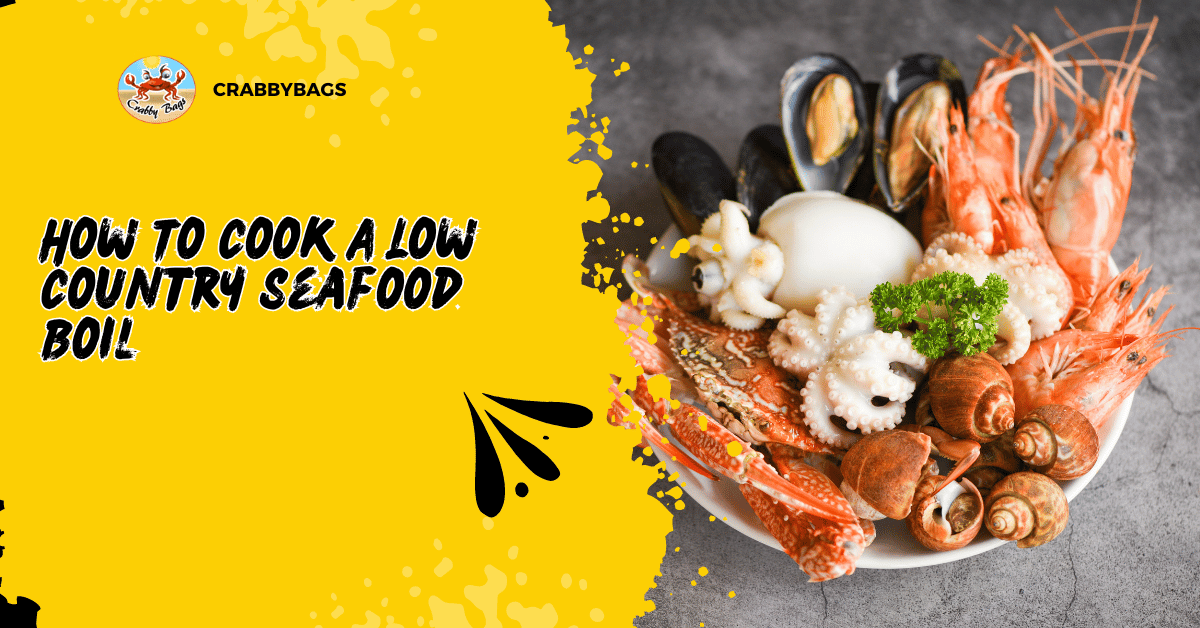
How To Cook A Low Country Seafood Boil
|
|
Time to read 5 min
|
|
Time to read 5 min
Are you ready to embark on a culinary journey to the American South? Look no further than the iconic Low Country seafood boil. This one-pot wonder is not just a meal; it's a celebration of flavours, a testament to Southern hospitality, and a delicious way to unite people.
In this guide, we'll explain everything you need to know to create the perfect Low Country seafood boil in your own kitchen.
Before we begin cooking, let's appreciate the history behind this beloved dish. Low Country seafood boils, also known as Lowcountry boils, originated in the coastal regions of South Carolina and Georgia.
This area, known as the Low Country, is characterized by its marshlands, tidal creeks, and rich seafood offerings.
The tradition of seafood boils dates back to the early 19th century when local fishermen would gather their catch of the day and create communal meals.
These gatherings evolved into social events, bringing families and communities together over steaming pots of seafood and vegetables.
A Low Country seafood boil is a one-pot dish that typically includes fresh seafood (shrimp, crab, and sometimes crawfish), corn on the cob, red potatoes, smoked sausage, and a blend of spices and seasonings.
All these ingredients are boiled together in a large pot, creating a flavorful and satisfying meal.
The beauty of this dish lies in its simplicity and the way it brings people together. It is often served family-style on newspaper-covered tables.
While the basic concept remains the same, you might encounter regional variations. Frogmore Stew, named after a community on St. Helena Island, often includes more corn and is sometimes called "Beaufort Stew."
The Beaufort Boil is similar but may consist of blue crabs when in season. In Virginia, you might find a Tidewater Boil that often includes clams and oysters.
You'll need various fresh ingredients to create an authentic Low Country seafood boil. The show's star is the seafood, which typically includes large shrimp with shells on, snow crab legs, and sometimes crawfish.
For the vegetables, you'll want to include ears of corn cut into thirds, small red potatoes, and a large onion quartered.
Smoked sausage, preferably Andouille, cut into 2-inch pieces, is a critical component that adds depth of flavour. Seasoning is crucial for achieving that authentic Low Country taste.
You'll need Old Bay seasoning, Cajun seasoning, bay leaves, minced garlic cloves, and fresh lemon quarters.
Before you start cooking, it's essential to gather the right equipment. You'll need a large stockpot, at least 12 quarts in size, or an outdoor propane cooker if you're planning to cook for a crowd. A strainer basket that fits inside your pot is essential for easy draining.
Long-handled tongs will help you safely handle the hot ingredients. For serving, prepare a large platter or clean a table and cover it with newspaper for an authentic experience.
Now that you have all your ingredients and equipment ready let's dive into the cooking process:
To take your Low Country seafood boil from good to great, keep these tips in mind:
An authentic Low Country seafood boil is all about casual, communal dining. Spread newspapers or butcher paper on a large table and pour the boil directly onto it.
Provide plenty of paper towels, wet wipes, and bibs for messy eating. Serve with melted butter, cocktail sauce, and lemon wedges on the side. For beverages, ice-cold beer or sweet tea complements the flavours perfectly.
While traditional is delicious, feel free to put your spin on the Low Country seafood boil. For a vegetarian version, replace seafood with extra vegetables like bell peppers, mushrooms, and Brussels sprouts.
Add sliced jalapeños or a dash of hot sauce for extra heat if you like it spicy. For a gourmet twist, include lobster tails or scallops.
A Low Country seafood boil can be nutritious when enjoyed in moderation. Seafood is rich in omega-3 fatty acids and lean protein, while vegetable components provide essential vitamins and fibre.
To make it healthier, consider using lean turkey sausage instead of pork, adding more vegetables, and going easy on the butter using olive oil.
Cooking a Low Country seafood boil is more than just preparing a meal; it's about creating an experience. This Southern tradition brings together the sea's bounty, the warmth of hospitality, and the joy of shared meals.
Whether hosting a backyard gathering or looking for a special family dinner, a Low Country seafood boil will impress.
So roll up your sleeves, gather your ingredients, and get ready to create some delicious memories. Your journey into Southern coastal cuisine starts here! Remember, the best part of a Low Country seafood boil is making it your own.
Feel free to experiment with different ingredients or spice levels. The most essential ingredient is the care you put into preparing this feast for your family and friends.
Many people have questions about preparing and serving a Low Country seafood boil. Here are some common ones:
A: While best served fresh, you can prepare the ingredients beforehand. Cook just before serving for the best results.
A: Store leftovers in an airtight container in the refrigerator for up to 2 days. Reheat gently to avoid overcooking the seafood.
A: A good rule of thumb is to plan for about 1/2 pound of seafood per person and adjust the vegetables and seasonings proportionally.




